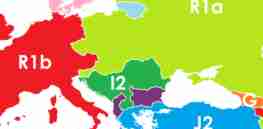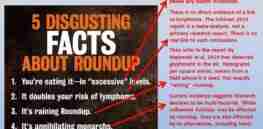Infographics

Y DNA: Redrawing map of Europe, North Africa and Middle East based on male lineages
The map [below] shows what the borders of Europe, the Middle East and North Africa might look like if they were ...
Infographic: Understanding ‘hazard vs risk’ illustrates lack of science behind IARC’s glyphosate cancer designation
Lately in the news of agriculture there has been a lot of controversy over the popular herbicide glyphosate being labeled ...
Infographic: India poised to dramatically increase its global GMO footprint
GM crop footprint in India is all set to grow once the government gives its final nod to GM Mustard, ...
Infographic: Who to trust—and who not to trust—about food and farming
With conflicting claims about scientific topics everywhere on the internet, it’s hard to know who to trust. This is especially ...
Infographic: 6 ‘snake oil salesmen’ who profit from food fears
Several activists opposed to genetic engineering run small media empires, including websites, TV and radio programs. Scientists say they are ...
Infographic: Global GM crops reduced farm chemical usage and CO2 emissions in 2016 boom year
[T]he International Service for the Acquisition of Agri-biotech Applications (ISAAA) released its annual report showcasing the 110-fold increase in adoption ...
Infographic: The history of modern crop breeding — And how biotech seeds fit in
Biotech crops are an important milestone for agriculture as it continually improves to keep pace with the growing demand for ...
Herbicide glyphosate now labeled ‘carcinogenic’ under CA’s Prop 65—Law that some say ‘only benefits lawyers’
The state of California can now require Roundup to have a label on it stating that it is a possible ...
Infographic: Explore the future of genetic engineering and food
The first genetically engineered apple, Arctic Apple, a modified variety of Golden Delicious, hit stores in test markets in the ...
Infographic: 5 popular foods genetically modified by humans–before GMOs
Have you ever wondered what it would be like to eat a completely "natural" diet? Well, for starters, you wouldn't ...
Infographic: Higher toxicity pesticides used in developing world pose environmental, health problems
Surveys of farm worker health are scarce, but it's clear that pesticides cause more harm in the developing world. More ...
Infographic: Pesticides getting safer, developed countries using less
Developed countries have phased out the more dangerous chemicals, such as parathion and other organophosphates. After the US Food Quality ...
Infographic: Enhancing yields, preventing disease
Long-term research plots have shown increases in wheat yield from controlling weeds and disease. Gains from plowing fallow fields were ...
Infographic: More demand, many uses of pesticides worldwide
Pesticide sales are increasing in Asia, Latin America, and Eastern Europe. In addition, companies often charge lower prices for older ...
Infographic: Pesticide use on arable land between 2005 – 2009
In a world of humanmade chemicals, pesticides are second only to fertilizer in the amount applied and the extent of ...
American Council on Science and Health fact sheet in response to GMO, biotechnology critics
Recently, a concerned group of pro-science scholars contacted American Council on Science and Health because they wanted to counter the ...
A voting guide for 2016 for those who care about science
Conflicted about this year's elections? Still on the fence about your candidates? Do you care about science? This graphic from ...
Infographic: Can modern biotechnology help you live forever?
Immortality, Fountain of Youth... Both are popular tropes repeated in popular science fiction and fantasy literature and movies. It is an idea ...
How did social media react to Nobel laureates call on Greenpeace to end ‘misleading’ campaign against Golden Rice
The announcement by more than 100 Nobel laureates for Greenpeace to end its 15 year effort to discredit Golden Rice—a beta carotene ...

Have you seen me: 1.3 billion tons of food lost every year
Each year, about 1.3 billion tons of food worldwide is lost or wasted from farmers’ fields to consumers’ plates. Check ...
Talking Biotech: Roslin Institute’s Bruce Whitelaw using gene editing to develop virus resistant pig
Roslin Institute animal biotechnologist Bruce Whitelaw is genetically engineering pigs to resist the deadly African swine fever virus ...
Chart: Bayer AG proposed takeover of Monsanto could create three crop-chemicals giants
With Monsanto Co. acknowledging it has received an unsolicited takeover bid from Bayer AG, the farm-chemicals business is poised for ...
How GMO mosquitos work
Ever wonder how GMO mosquitos work in fight against vector-borne diseases like the Zika virus? Check out this infographic about ...
‘Beepocalypse’? How US honey bee population is fairing
There has been an ongoing vigorous debate about the health of the American bee population. Bees play a key role ...

